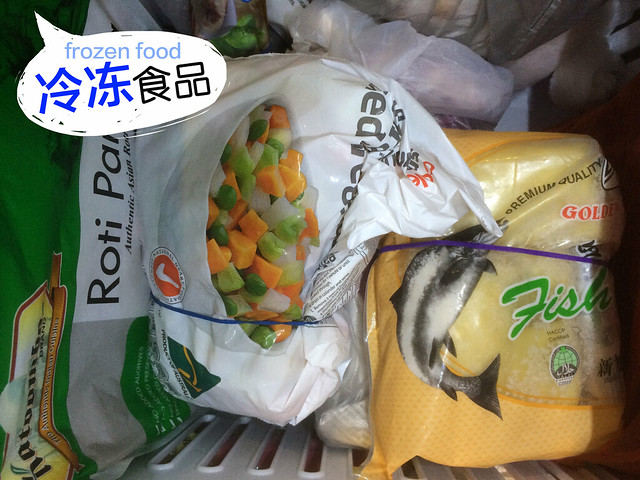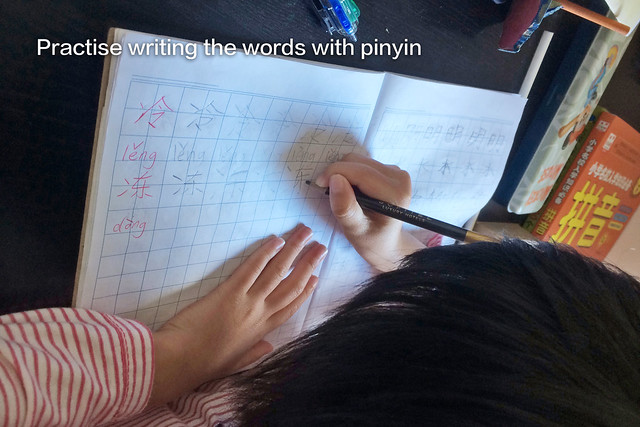Hanyu Pinyin Mini Cards
First of all, this is not a post on a DIY toy/craft project but rather a DIY teaching cards for learning /writing pinyin and basic Mandarin characters (disclaimer: I’m not trained in the teaching of Mandarin so any comments are most welcomed). This post also outlines how this set of cards may be used to help:
- acquire basic Mandarin vocabulary, starting from stuff in the familiar domestic setting
- sight read & construct pinyin phonics (aided by colour coding)
- relate pinyin and intonations to actual words when using a pinyin-mandarin dictionary (simple looking-up-a-dictionary skills)
It should be advised that there are certain prerequisites for both parent/adult and child when considering the use of this set of cards, i.e.;
- child must be able to sound out the alphabets in English
- parent/adult must be comfortable with spoken/written Mandarin
- parent/adult must be familiar with pinyin to note the differences in pronunciation of some pinyin to their English counterparts
Mini Cards+Pouch Design
Kiddo gets a ‘surprise’ (lol) i.e. a pouch containing these mini cards. The cards are sized to fit kiddo’s palm for portability. The pouch folds out/up and is held with a sewn-on elastic band. There’s also room for some sticky putty for placing the cards up on walls when working with her on the pinyin exercises.

These mini pinyin cards are colour coded according to the type of initials 声母 and finals 韵母. This allows kiddo to distinguish what goes where when putting together the pinyin of different characters.

Kiddo is introduced to the cards (which have been laminated too for extra protection) and more importantly, taught to sort them accordingly. Initials 声母 and finals 韵母 to be arranged from left to right.

How to use these cards:
- Keep the lesson short, perhaps just 2 -6 words per session.
- Provide a photo/picture as a trigger or better still, bring kiddo to whatever’s in the domestic setting.
- I prefer the experiential approach so kiddo gets to see, feel and hear first hand. E.g. frozen food relates to cold 冷 and it’s an integral part of 冷冻 which means frozen (unlike english, where cold in implied and not readily evident in the written frozen).

- Help kiddo sound out the words. the mini cards are then picked from the pouch, arranged and stuck on the wall in front of her desk with putty.
- Follow through with identifying the correct intonations for the words.

- Introduce the archaic pocket hanyu pinyin dictionary…Glad, kiddo finds it fun to flip and try finding / matching the words…while novelty lasts.
- Kiddo was able to look up the correct section based on the pinyin pieced together with the cards but she not able to (nor was she expected to) identify the right words most of the time. Letting her guess and dropping hints of how the characters look like helped.

- Once identified, it’s time for kiddo to practice writing (according to respective strokes). Again, let kiddo refer to the mini cards when writing the pinyin along with the characters.

- The cards are left on the wall for a couple of days and kiddo gets a mini ‘revision’ (i.e. asking what were the words for) before the next round of pinyin/writing exercise. Hopefully the cards, being in her visual perimeter, will serve to remind what’s learnt.
Extra ‘play time’ activity that you can try:
- Child also gets to come up with and put together ‘funny’ words by matching her choice of initials 声母 and finals 韵母 .
- Child then draws out (visualises) what the ‘funny’ word is. Adult/parent will then guess the word. This should be open-ended, with adult/parent guessing what the child is trying to communicate and helping to write down the character/s.
- As long as the child gets the sequence of having the initials 声母 before the finals 韵母, and is able to articulate the 4 intonations, I think it’s pretty ok.
Kiddo has pretty much learnt to read and sound out the English alphabet in the past year, so the learning curve is less steep when it comes to pinyin acquisition and use. She had been using this for the past 4 months but there’d been no tests to gauge ‘any improvement’. She does get comfortable with the use of these cards to form pinyin and is familiar with the whole learning routine, so the very least that can be said is that it’s become part of her repertoire of resources (including Mandarin story books and videos) for learning the language. Ultimately, fostering an environment that uses Mandarin regularly is still the best bet for the child to pick up the language.
